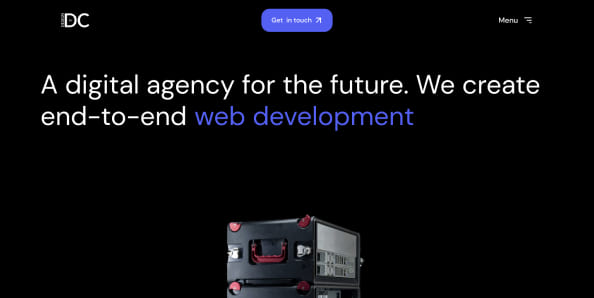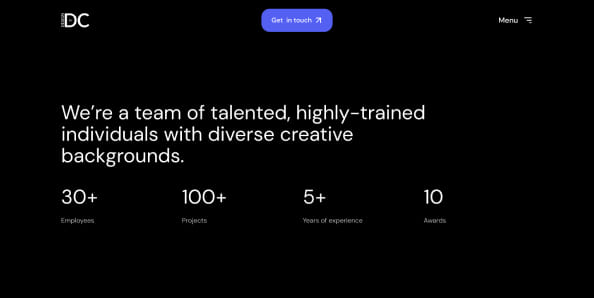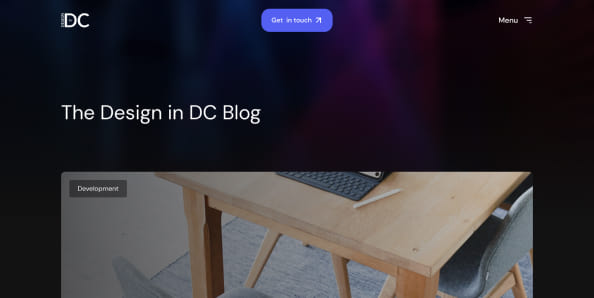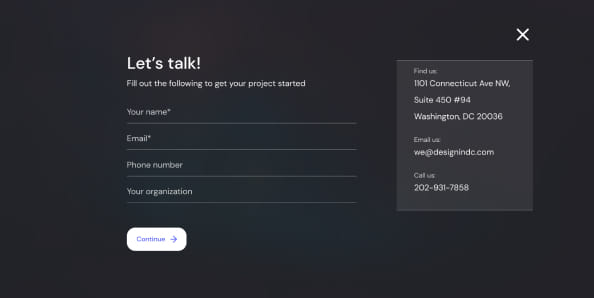Break it Down, Build it Up: Why You Should Redesign Your Website
A business website is much more than a digital placeholder. It is your brand’s most potent marketing tool, a salesperson who works around the clock, and a platform that allows your audience to engage with your brand.
Updating your website is vital to establishing your brand, improving online visibility, and attracting more qualified leads. With digital marketing trends evolving and search engine algorithms constantly changing, your website needs to stay ahead to remain relevant and effective. Below, we take a look at why it’s time to redesign your website.
A Website Redesign is Critical in Today’s Digital Landscape
In the digital age, your brand’s website serves as a critical touchpoint for your audience. It’s where potential customers learn about your brand, explore your products or services, and decide whether or not to do business with you. Consequently, a stale, outdated, or dysfunctional website can harm your brand image and bottom line.
A well-designed, user-friendly, and up-to-date website thrusts your marketing strategy forward in several ways.
- Enhances your brand image
- Improves search engine rankings
- Increases traffic
- Convert visitors into customers.
Therefore, it’s essential to routinely analyze your website’s performance, identify areas of improvement, and redesign your website as needed to ensure it continues to serve as an effective digital marketing tool.
10 Signs Your Website Needs a Design Overhaul
1. Your Website Looks Outdated
Web design trends evolve rapidly. Just as fashion trends change with the seasons, website designs that were once trendy a few years ago may now seem dated. If your website appears old-fashioned compared to your competitors, it’s probably time for a redesign.
Your website’s aesthetics directly impact your brand image and user engagement. A sleek, modern, and visually appealing website grabs attention, creates a positive first impression, and encourages visitors to stay longer and explore more.
2. Your Website Lacks Responsiveness

Today, people access the internet from various devices, including desktop computers, laptops, tablets, and smartphones. Therefore, your website must be responsive, providing a seamless user experience across all devices.
If your website doesn’t adapt well to different screen sizes or takes too long to load on mobile devices, you risk losing a significant portion of your audience. An unresponsive website can also hurt your rankings, as search engines like Google prioritize mobile-friendly websites in search results.
3. Your Website Provides a Poor User Experience
The ease of navigation and the overall user experience on your website directly impact your bounce rate (the percentage of visitors who leave after viewing just one page) and conversion rate (the percentage of visitors who perform a desired action, such as making a purchase or filling out a form).
If your website is difficult to navigate, has broken links, or contains outdated or irrelevant information, it can frustrate visitors and prompt them to leave. On the other hand, a website that is easy to navigate offers useful and current information and features a clear and compelling call to action that can engage visitors, increase dwell time, and boost conversions.
4. Your Website Doesn’t Reflect Your Current Business and Marketing Strategy
As your business evolves, your website should too. If you’ve expanded your product range, entered new markets, modified your brand identity, or changed your marketing strategy, your website must reflect these changes.
A website that accurately represents your brand, offers up-to-date product information and aligns with your current business and marketing strategy can enhance your brand image, engage your target audience, and drive more leads and conversions.
5. You Cannot Update Your Website Content Easily
Content is king in digital marketing. Regularly updating your website with fresh, relevant, and high-quality content is crucial to engage your audience, improve your search engine rankings, and drive more traffic. However, if your current content management system is hard to use or doesn’t allow you to add or update content easily, it can hinder your content strategy.
6. Features on Your Website Don’t Work Properly
A website with features that don’t work properly can frustrate visitors, tarnish your brand image, and hurt your conversion rate. Whether it’s a shopping cart that doesn’t work, a contact form that doesn’t submit, or a link that leads to a 404 error page, such issues can result in a poor user experience and lost sales opportunities
7. Your Website is Not Optimized for Search Engines

Search engine optimization (SEO) is crucial to improving your website’s visibility on search engines and driving more organic traffic. If your website is not optimized for relevant keywords, lacks high-quality backlinks, or has technical SEO issues such as slow loading speed or duplicate content, it can hurt your search engine rankings.
8. Your Website Lacks Social Media Integration
With the growing importance of social media in digital marketing, it’s critical to integrate your social media profiles with your website. This can increase your social media followers, enhance your online presence, and boost your brand awareness and engagement.
9. Your Website is Not Optimized for Voice Search
With the increasing use of voice-activated devices like smartphones, smart speakers, and virtual assistants, voice search is becoming a significant factor in SEO. If your website content is not optimized for voice search, you may miss out on a growing number of voice-based queries.
10. Your Website is Not Optimized for AI and Machine Learning
AI and machine learning are revolutionizing digital marketing and SEO. They can help analyze massive amounts of data, gain valuable insights, personalize the user experience, and improve decision-making. If your website is not leveraging the power of AI and machine learning, it may not be competitive in the evolving digital landscape.
How to Redesign Your Website Effectively

Redesigning your website is not just about changing its look and feel. It involves reevaluating your website’s performance, identifying areas of improvement, and implementing changes that can enhance user experience, improve SEO, and drive more leads and conversions.
Some tips on how to redesign your website effectively include
- Define Your Goals: Before starting the redesign process, clearly define what you want to achieve with the redesign.
- Understand Your Audience: Research your target audience’s needs, preferences, and behaviors to design a website that resonates with them.
- Choose the Right Platform: Choose a platform that offers the design flexibility, functionality, and ease of use you need.
- Focus on User Experience: Prioritize user experience in your redesign by improving navigation, simplifying the layout, and making the website responsive.
- Optimize for SEO: Incorporate SEO best practices in your redesign to improve your search engine rankings.
- Test and Monitor: After launching the redesigned website, continuously test its performance to identify and fix any issues.
Redesigning your website is a significant investment of time, effort, and money. However, it can yield significant returns in terms of improved brand image, enhanced user experience, increased search engine visibility, and boosted conversions.
By understanding when and why to redesign your website and following best practices in website redesign, you can ensure that your website remains an effective digital marketing tool for your business.
Is it Time to Update Your Website?
From website design & development to branding, media creation, and app development, Design In helps you tell a unique story that amplifies your brand and sets you apart. Contact us today and let us help you develop an effective marketing strategy that modernizes your website, drives more conversions, and puts your business front and center in the marketplace.












